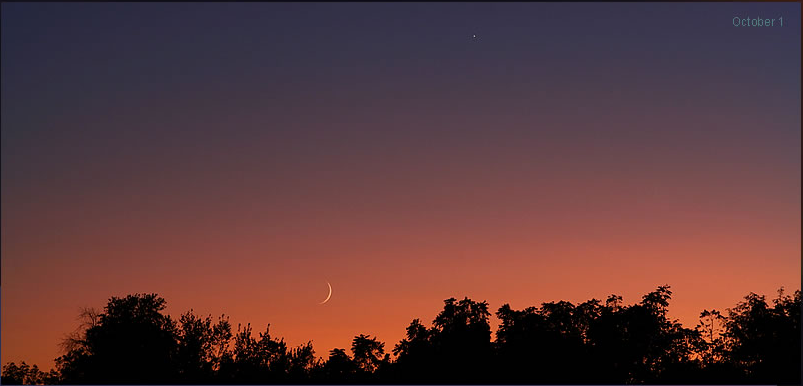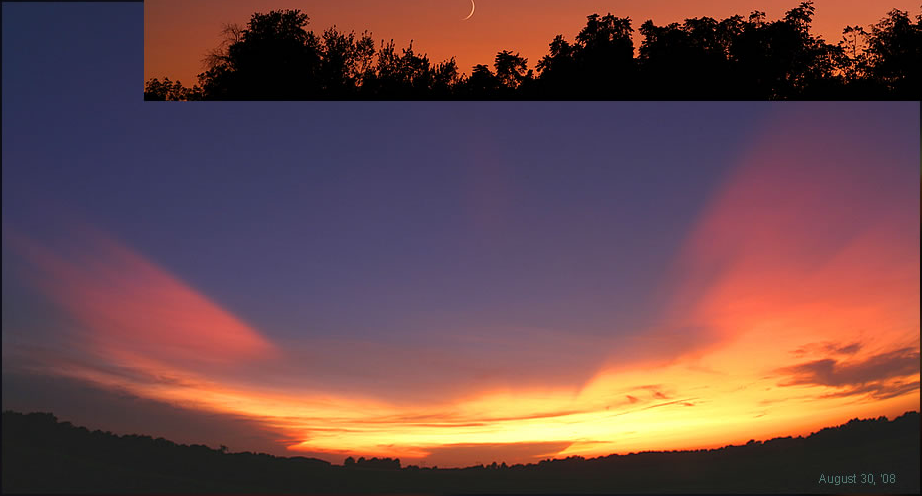Kasotochi Once Again
Kasotochi Once Again: A Spectacular Display of Atmospheric Optics
The eruption of Kasotochi has left a lasting impact on the skies, captivating internet users with its vibrant and mesmerizing twilight scenes. However, it is important to note that not all colorful twilights can be attributed to Kasotochi's fires. Ordinary twilights hold their own enchantment, and there is a danger of mistakenly associating them all with the aftermath of this volcanic eruption.
To gain a deeper understanding of the various atmospheric phenomena at play, let's explore a collection of photographs taken in Kansas by Doug Zubenel. These images beautifully showcase the diverse effects of stratospheric dust and aerosol. Among them, we can observe an extraordinary bright yellow twilight arch, long diffuse shadows cast by sunlight from over the horizon, and the emergence of intense "purple light" as twilight deepens higher in the sky.
While Kasotochi may appear puny in comparison to Krakatoa's impact on Earth's twilights, it still offers a plethora of captivating optical displays. Let's delve further into these phenomena and appreciate the wonders of atmospheric optics.
The Extraordinary Bright Yellow Twilight Arch
One remarkable effect captured by Zubenel's photographs is the presence of a vivid yellow twilight arch. This phenomenon occurs as sunlight interacts with suspended particles in the stratosphere, scattering shorter wavelengths of light and allowing longer wavelengths, such as yellow and red, to dominate the sky. The result is a breathtaking display of warm hues that adorn the twilight canvas.
Long Diffuse Shadows from Lower Tropospheric Clouds
Another fascinating observation is the casting of long, diffuse shadows by sunlight that has grazed lower tropospheric clouds. As the sun sets below the horizon, its rays traverse through these clouds, creating an interplay of light and shadow. This phenomenon adds depth and dimension to the landscape, painting it with an ethereal quality that captivates the eye.
The Intense "Purple Light" of Deepening Twilight
As twilight deepens, a captivating phenomenon known as "purple light" emerges higher in the sky. This ethereal glow is a result of the scattering of shorter wavelengths of light, primarily blue and violet, by molecules and aerosols in the atmosphere. As the sun disappears below the horizon, these scattered colors become more pronounced, creating a mystical ambiance that enchants both astronomers and stargazers alike.
The Lingering Influence of Krakatoa
While Kasotochi may not have had the same magnitude as Krakatoa's impact on Earth's twilights, it still left a lasting impression. Krakatoa's eruption in 1883 injected massive amounts of volcanic aerosols into the stratosphere, resulting in a prolonged period of vivid and colorful twilights worldwide. Similarly, Kasotochi's eruption contributed to the atmospheric composition, albeit on a smaller scale, influencing the optical phenomena we witness in the sky.
Appreciating the Beauty of Ordinary Twilights
It is crucial to acknowledge that not all enchanting twilights can be attributed to volcanic eruptions or other extraordinary events. Ordinary twilights possess their own inherent beauty, offering a glimpse into the harmonious interplay between light, particles, and atmospheric conditions. Whether it's the soft hues of pastel pinks and oranges or the serene transition from day to night, ordinary twilights remind us of the wonders that surround us daily.
A Reminder of Nature's Grandeur
Kasotochi's eruption serves as a reminder of nature's grandeur and its ability to shape our world. The interplay between volcanic activity, atmospheric optics, and the ever-changing sky presents us with an opportunity to marvel at the intricate mechanisms that govern our planet. By observing and appreciating these natural phenomena, we gain a deeper understanding of the world around us and our place within it.
In conclusion, Kasotochi's impact on atmospheric optics, though smaller in scale compared to Krakatoa, still offers a remarkable display of vibrant twilights and captivating optical phenomena. From the extraordinary yellow twilight arch to the emergence of intense purple light, these spectacles remind us of the beauty that can be found in both ordinary and extraordinary moments. By embracing and appreciating the wonders of atmospheric optics, we gain a renewed sense of awe for the natural world and its ever-changing canvases in the sky.

The Internet is full of colourful twilight skies ascribed to Kasotochi's eruption. Ordinary twilights are a magical time too and there is a danger that they are all attributed to Kasotochi's fires!
However, scan through this collection taken in Kansas by Doug Zubenel. They show the many effects of stratospheric dust and aerosol. An extraordinary bright yellow twilight arch. Long diffuse shadows cast by sunlight from over the horizon that has grazed lower tropospheric clouds. The intense 'purple light' that forms higher in the sky as twilight deepens.
Krakatoa coloured Earth's twilights for years. In comparison Kasotochi was puny - but it has plenty to offer.
More twilights 1,2,3,4,5,6,7



Note: this article has been automatically converted from the old site and may not appear as intended. You can find the original article here.
Reference Atmospheric Optics
If you use any of the definitions, information, or data presented on Atmospheric Optics, please copy the link or reference below to properly credit us as the reference source. Thank you!
-
<a href="https://atoptics.co.uk/blog/kasotochi-once-again/">Kasotochi Once Again</a>
-
"Kasotochi Once Again". Atmospheric Optics. Accessed on November 18, 2024. https://atoptics.co.uk/blog/kasotochi-once-again/.
-
"Kasotochi Once Again". Atmospheric Optics, https://atoptics.co.uk/blog/kasotochi-once-again/. Accessed 18 November, 2024
-
Kasotochi Once Again. Atmospheric Optics. Retrieved from https://atoptics.co.uk/blog/kasotochi-once-again/.